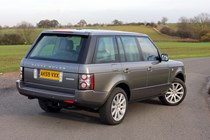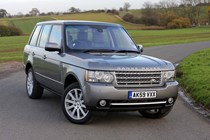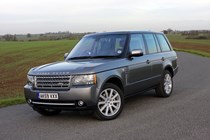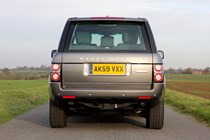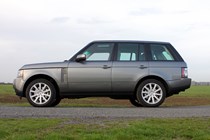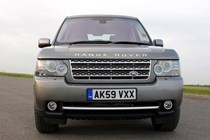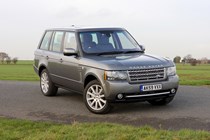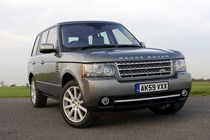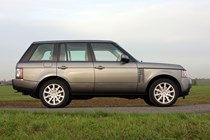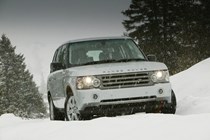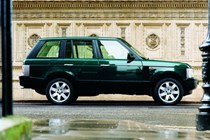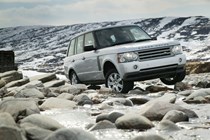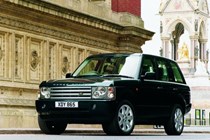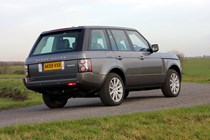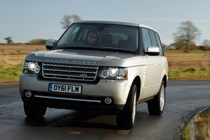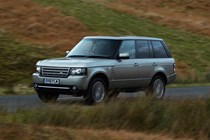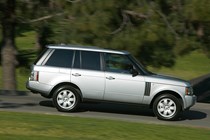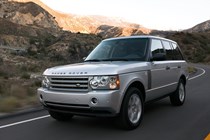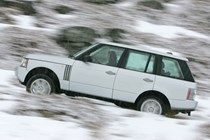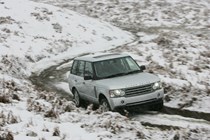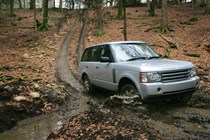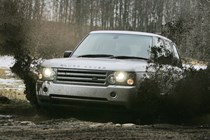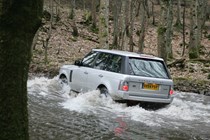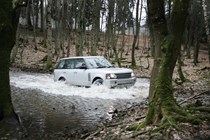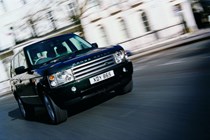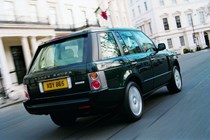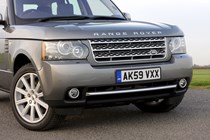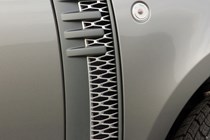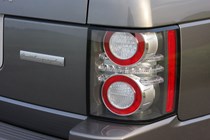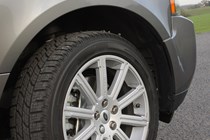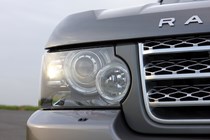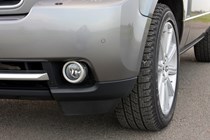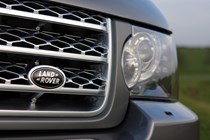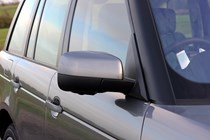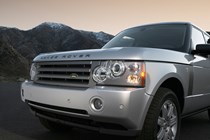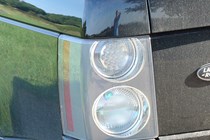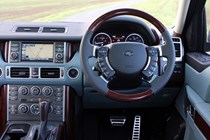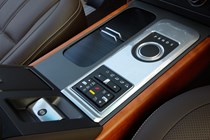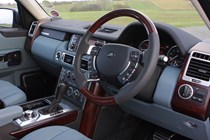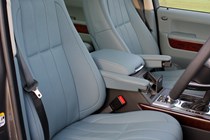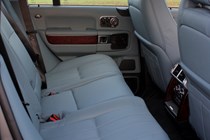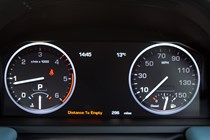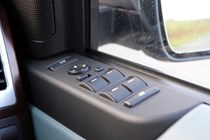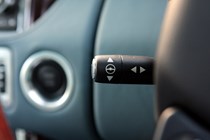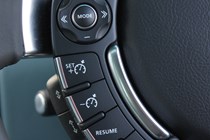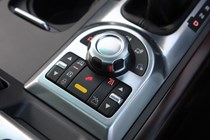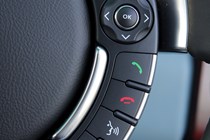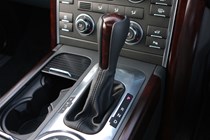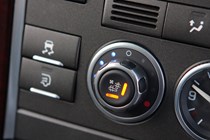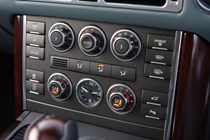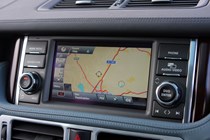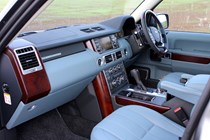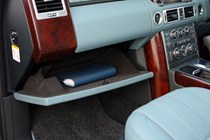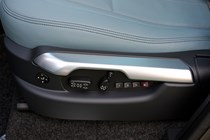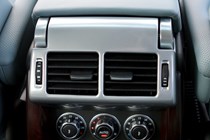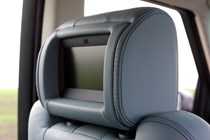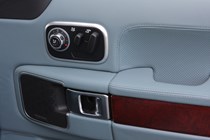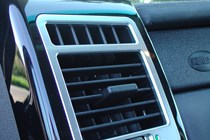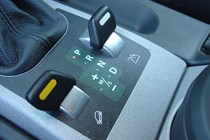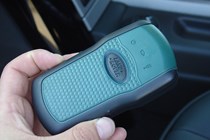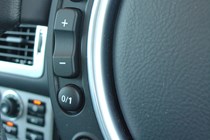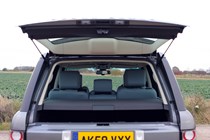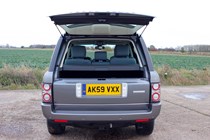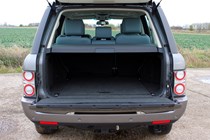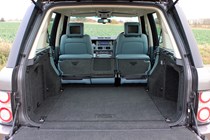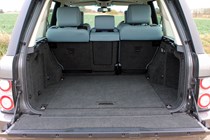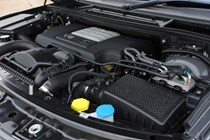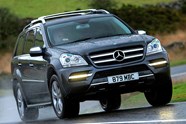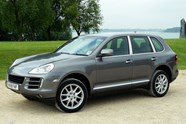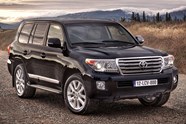
Range Rover Estate review
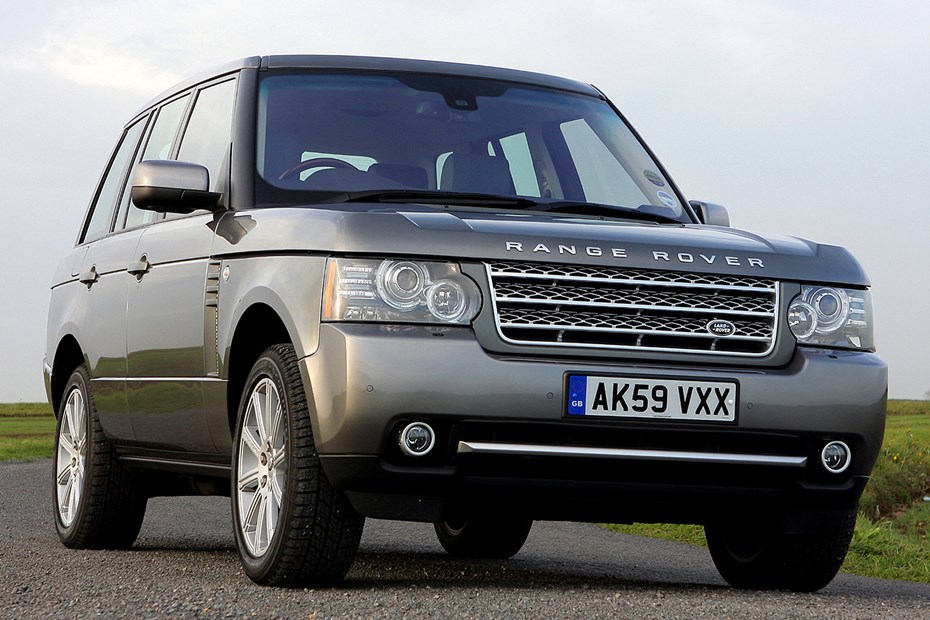
At a glance
| Price new | £45,830 - £87,045 |
|---|---|
| Used prices | £1,075 - £13,930 |
| Road tax cost | £415 - £735 |
| Insurance group | 38 - 50 |
Get an insurance quote with

|
|
| Fuel economy | Not tested to latest standards |
| Range | 374 - 686 miles |
| View full specs for a specific version | |
Available fuel types
Petrol
Diesel
Pros & cons
- Iconic styling, cutting edge tech when new
- Luxurious high quality interior
- Great on- and off-road
- These are not cheap to run, or maintain well
- Known rust spots expensive to fix
- Gearbox and engine failures common with age
Land Rover Range Rover (02-12) rivals
Overview
Who doesn’t enjoy getting pampered? It won’t have escaped your attention that the Range Rover Mk3, introduced in 2002, is getting extremely cheap – and very few cars feel as special for so little. There has to be a catch, and of course, there are several. That doesn’t mean a cheap Range Rover is a bad choice. If you think a bit of first-class comfort for steerage money is up your street, keep reading.
> Find a used Range Rover Mk3 for sale near you
What’s special about the Range Rover Mk3?
When the Range Rover was launched in 1970, it created a new class of car. That basic vehicle lasted until 2001, and also spawned the Land Rover Discovery as well as the rebodied P38 Range Rover Mk2. Unlike its short-lived predecessor, the Range Rover Mk3 introduced a completely new construction. Losing the separate chassis, and gaining sophisticated suspension for vastly improved road manners, it also lost the last vestiges of being a farm implement; this Range Rover is a credible rival for any contemporary Rolls Royce or Bentley.
It rides softly on air springs, handles well at speed, and has refined petrol or diesel engines with unobtrusive all-wheel-drive. Its off-road credentials remain exceptional, and it is so cleverly designed that the rough stuff isn’t quite the existential threat to the bodywork you might expect.
The Range Rover’s advantages go beyond grip and mountains, though. The view of the world outside is commanding, and the seats, just sublime for long journeys. Forget the image and aspiration – everyone knows how cheap these are now – and you can truly appreciate why this car cost the equivalent of £100,000 new.
> For contrast, here’s what the latest Range Rover Mk5 is like.
Range Rover Mk3 (L322) known faults and common problems.
1. Bodywork – where to check the Range Rover Mk3 for rust
Land Rover are masters of aluminium, but this Range Rover is largely steel. It’s astonishingly heavy, and solidly made, but has some weak spots even before accident and damage history come into play. Before looking at anything else on a prospective purchase check the rear door shuts and arches leading into the sills.
If there’s visible rust above the plastic, there’s a lot worse going on below; if it looks freshly painted ask if you can unclip the plastic trim to check behind.
It doesn’t seriously weaken the structure until it gets really bad, but it will cost a good four-figure sum to put right properly. Other areas to watch include boot floor, and roof pillars, plus cosmetic rust on tailgate behind the plastic skin. None of these are as crucial as the rear sill and arch area.
2. Suspension – Range Rover Mk3 air suspension
The next bit is the suspension. Air suspension is not complicated, or expensive, but it is unfamiliar for many garages and gets bodged and misdiagnosed leading to a reputation for trouble. Do lots of research on forums, and be prepared to budget for some preventative maintenance during your ownership.
Conventional suspension components, such as bushes and links, do wear – but are inexpensive and relatively easy to sort. Knocks and rattles on speed bumps and small bumps give the game away.
Many problems with the L322’s suspension and traction systems can be traced to ABS sensors and rings. These parts cost less than misguided diagnostics, so start there.
3. Range Rover Mk3 diesel engine problems
There are two diesel engines in earlier models, the BMW M57 3.0-litre straight six which is generally reliable, but somewhat underpowered, and the 3.6-litre TDV8. That’s an extension of the troublesome 2.7-litre V6 found in contemporary Discovery 3s, and though a very good engine when new, some common issues mean we’d avoid all but the best with impeccable history and a warranty. Be particularly wary of ‘runs but knocking’. Later 4.4-litre diesels are quite good if looked after.
4. Range Rover Mk3 petrol engine problems
Early models have BMW 4.4-litre V8s, a big upgrade from the previous generation’s Rover V8. Timing chains are the main concern for routine wear, but also be mindful of ancillaries such as the water pump and gearbox cooler. There’s plenty of space to work on the engine and it’s well-documented. Later models use the Jaguar V8, including supercharged options, and that too is capable of high mileages if maintained well.
5. Automatic gearboxes – service history is vital
You’ll see a lot of reconditioned gearboxes mentioned on Range Rovers over 100,000 miles, and just as many ‘breaking for spares, gearbox fault’. The ZF 5- and 6-speed boxes are good, but from a time when ‘sealed for life’ was taken seriously. If you find one that has had the oil changed regularly, excellent, but don’t be put off by a replacement having been fitted if the car drives well on a test drive. The GM box found on the diesels is similarly troublesome, and similarly, benefits from fluid and filter changes every 50-75,000 miles. It’s a little harder to DIY the filter change on though.
6. Interior trim – where to look for wear
The whole point of buying a Range Rover Mk3 is to sit in the lap of luxury, more so than in the previous models. They’re generally well made with a couple of vulnerable spots (driver’s seat control trim, armrests and handles for starters) and as lavish as a contemporary Bentley. Check for working cupholders and ashtray as the mechanisms are quite complex, but secondhand parts are not too expensive.
It’s expensive to fix the seat and dash trim, so take your time to check the wear is reasonable and nothing’s missing or broken. The newer the model, the higher the quality, as a rule.
8. Range Rover boot trim – hard work, not hard wearing
Again, luxury car means expensive finishes – and the boot trim is prone to marks and scratches. Everything above the carpeted area is also fairly brittle. So broken bits, squeaks and rattles are inevitable. Pay particular attention to the upper tailgate trim, it’s brittle and hard to find good used replacements. The parcel shelf also ages badly and is expensive to replace; a good one is easily worth £150. Dog guards, on the other hand, are easy to find.
The carpets are tough, though. While checking in there make sure the clever spare wheel lifting setup is in place, and the tailgate support straps and struts are good. They’re cheap and easy to replace, so make an excellent bargaining point.
9. Range Rover infotainment and technology issues and upgrades
By the time these Range Rovers are cheap, the entertainment system fitted to the Vogue (and optional on HSE) is probably displaying (or not) many issues. Most issues are down to damp; check out the storage boxes in the side of the boot. Budget £300+ if it’s broken, either for repaired original or third-party modern upgrades. Add £1,000 to that if you’re not DIYing it. Early Alpine (BMW) navigation suffers from dead pixels, and your trip computer uses that display. A third-party upgrade will lose that feature.
Essentially, if the asking price is high, but the screen/nav are broken, haggle hard or walk away. If you want to fit an aftermarket system go for an HSE without the in-dash screen, as it’s considerably easier.
There’s a lot of technology fitted to the Range Rover, BMW-based on early models, Ford on later versions. Before diagnosing any faults, make sure that the car’s battery and charging system are in perfect working order.
10. Range Rover Mk3 running costs – budget for luxury
A £2,000 Range Rover is tempting, but some consumables are appropriately expensive, particularly tyres, gearbox servicing, and higher-mileage maintenance on the engine. And, of course, the fuel. They are at least compatible with E5.
As a rule though, the L322 is pretty reasonable to maintain if you are proactive rather than waiting for things to break. If you DIY it, most parts are cheap, there are plenty of secondhand bits and rural garages are familiar with them for bigger jobs. They’re also designed well for the most part. But this is not going to cost the same as a Fiesta to run. Take a look at the monthly cost on PCP of a new one, consider what you’re getting and don’t be afraid to spend on making it nice. You’ll enjoy it far more.
Anything else to consider with the Range Rover Mk3?
Despite that shiny, sleek design, this is still a serious off-roading 4×4. If you want to go green laning, budget for some proper tyres for mud, and go for an example that already has side steps as though they reduce clearance, they offer serious protection as well. All the solid ironwork you expect of a Land Rover is behind pretty plastic cladding.
That plastic cladding can hide rusty nastiness too, so get underneath when checking this car out. You’ll have a good view of almost everything, but the sills are enclosed in plastic apart from the upper edge of the inner sill.
Newer models are better, but more sophisticated. We’re mainly focusing on the cheapest examples here, and if spending more than £6,000 we’d recommend getting an independent expert inspection. Also, watch out for cheap styling upgrades and facelifts. The latter, done well, can look good – but they often hide accident damage or just owners wanting the cheapest fixes. Very few of the easily damaged or worn parts on a Range Rover are unreasonably priced, and good second hand original parts are often cheap.



